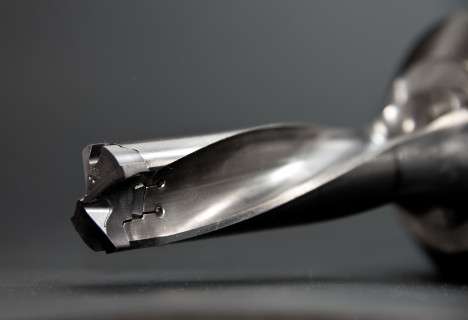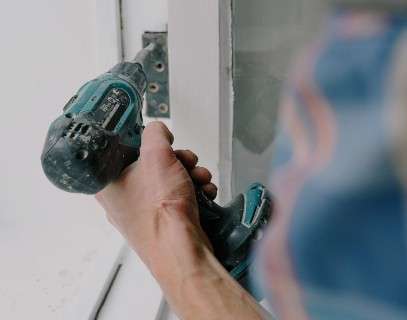Constructor workers use all sorts of specialized tools to perform different activities during a construction project. This includes pneumatic saws, cutting tools, and drills. Drills stand out for the wide range of drill bits they can accommodate. This includes twist drill bits, auger drill bits, and spade drill bits. Left-handed drill bits are another type of drill bit that are used for certain tasks.
You may be wondering, “What is a left handed drill bit?”. These are specialized drill bits that are frequently used during construction projects. Such drill bits may be utilized to extract bolts in the absence of a proper bolt extractor.
Table of Contents
What Does a Left Handed Drill Bit Look Like?
Left handed drill bits are easy to identify due to some key characteristics they possess. Before we look at how to identify a reverse drill bit extractor, it is worth examining what an ordinary “right-handed” drill bit looks like.
Drill bits generally have narrow slots or grooves carved into their surface. These slots wind around the drill bit surface in a corkscrew fashion. In an ordinary drill bit, these slots usually wind upwards, traveling in a clockwise direction. When viewed from bottom to the top, this gives the appearance of the flutes winding towards the right-hand side.

So what does a left-handed drill look like? A left handed drill bit is one whose flute winds towards the left-hand side when viewed from bottom to the top. The counter-clockwise flute arrangement makes the left hand vs right hand drill bit useful for specialized applications.
What is a Left Handed Drill Bit Used For?
You may be wondering what exactly a left handed drill bit is used for. One might assume that these drill bits are used to create threaded screw holes similar to the ones right handed drill bits create, but in the opposite direction. However, left handed drill bits aren’t generally used for such purposes.
One area that left-handed drill bits are frequently used is to extract broken bolts, studs, and screws. They are useful when you don’t have a screw and bolt extractor set around. So how exactly does a left-handed drill bit accomplish this? The answer lies in the bolt or screw’s design.
Most bolts and screws are designed to be inserted into holes and tightened by being rotated in the clockwise direction. This can be accomplished by hand or using a nut driver bit. The left-handed bit performs the opposite of this by turning the bolt or screw counter-clockwise and removing it from the hole. The mechanism is similar to how a waiter’s corkscrew works. This sounds simple enough, but you may be wondering why construction workers can’t do this with ordinary tools.
While it is possible to remove bolts and screws using a punch or a mole wrench, it’s not quite that easy when they don’t go clear through the wall or beam. A left-handed drill bit makes the process much easier and faster in these cases.
Left-handed drill bits are also great for extracting broken or sheared bolts and screws. Such bolts and screws are deformed or broken to the point where an ordinary wrench or screwdriver may not be sufficient to remove them. The left-hand drill bit is especially useful for removing a series of broken or sheared bolts or screws in older structures quickly. This helps cut down on delays during construction and deconstruction projects.
By now you would have figured out that a left-handed drill bit has nothing to do with the user’s handedness and can be used by left and right-handers, unlike a left handed circular saw, rotary cutter, left handed caliper, or left handed tape measure.
How to Use a Left Handed Drill Bit to Remove a Bolt
Removing a stuck bolt with a left handed drill is a straightforward process that takes only a few minutes. The steps for doing so are summarized below.

Step 1: Assemble the Right Tools
The first step is to gather the right tools and equipment for the job. You will generally need to gather the following items and keep them handy in pouches on a suitable drill holster or tool belt:
- A left handed drill bit
- A drill with a reverse gear
- A hammer
- A center punch
- Safety gloves
- Safety glasses
- Thread cutting or thread penetrating oil
Step 2: Get Your Safety Gear On
Safety is a key consideration during any construction project. Once you have gathered the items above, you should put on your safety gloves and safety glasses.
This safety equipment is crucial because of the dangers associated with drilling metal and concrete. It’s not uncommon for shards to go flying in all directions during the bolt extraction process. Such shards can penetrate the skin on your hands and even blind you if they come into direct contact with your eye.
Step 3: Mark the Bolt Center
It is vital to mark the center of your bolt before performing an extraction. This is because the drill bit must be applied to the center to ensure the removal process goes smoothly. If the bit doesn’t go in through the center, there’s a high chance that you could break the bolt or screw inside, making the extraction process even more difficult.
You can mark the center of the bolt easily using a center punch and a hammer. Using an automatic center punch may be advantageous in this situation as you won’t need a hammer to help make the marking.
Step 4: Start Drilling
Once you have the bolt center marked accurately, you can begin assembling your drilling equipment. Start by coating the left-handed drill bit in a small quantity of thread cutting oil. Next, fix the drill bit to your drill.
Set the drill to the “reverse” setting and place the tip of the drill bit against the bolt’s center mark. Activate the drill and begin drilling at a slow speed while applying forcing. The bit should then penetrate the bolt and start unfastening it.
What to Keep in Mind When Using a Reverse Drill Bit
When using the reverse drill bit method mentioned above, you should always start with the smallest reverse drill bit you have on hand. If that size doesn’t work, you can try using the next size. A keyless chuck will be useful in this situation because it allows you to swap out drill bits without having to use a key each time.
How to Sharpen Left Hand Drill Bits
If your left hand drill bit is having trouble penetrating the bolt surface, it may need to be sharpened. Sharpening left hand drill bits can be challenging because it requires specialized tools. The company, Drill Doctor, produces specialized sharpening tools specifically for this purpose. For example, their models DD500X and DD750X are capable of sharpening left handed drill bits along with other bits. You would also have to purchase the optional left hand chuck.
You may also be able to sharpen a reverse drill bit extractor using an angle grinder. However, this approach is dangerous and should generally be avoided.
FAQs
Which way do you drill a left handed drill bit?
A left handed drill bit is typically spun in the counterclockwise direction. This is the direction needed to remove the bolt or screw from the hole. To do this, you would set your drill to “reverse”.
How do you drill out a screw without extractor?
You can drill out a screw by first making an indentation in the surface. You can then use a left handed drill bit to remove the screw from the hole.
Can you get left hand drill bits?
Left hand drill bits are available at most DIY or hardware stores. They are less common than right hand drill bits, but should be found in the drill bits section of the store.
Do left handed drill bits work?
Left handed drill bits work quite effectively as long as you use them properly. Before starting with one, you have to create a divot in the center of the face of the bolt or screw you have to extract so that the bit doesn’t slip or go in at a slant.
